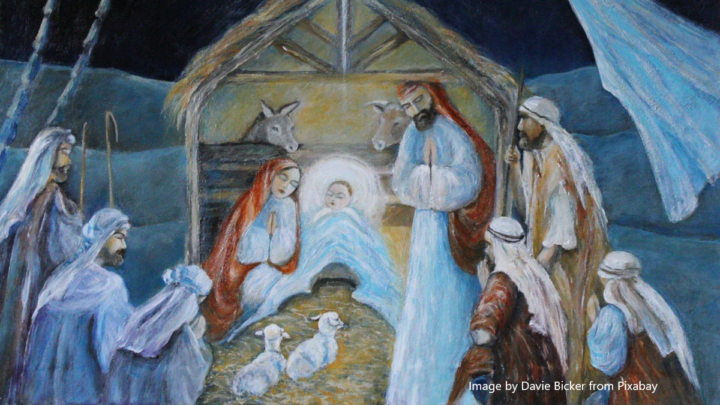A few months ago, as my daughters were plying me for birthday gift ideas, I suggested that the best present for me would be a simple family picture. It didn’t need to be professional shot or edited, just a photograph of each family unit. I finally received a set of pictures from my oldest daughter, Jessica. The family was dressed in outfits of matching plaid patterns. Her sister-in-law had spent time having them pose. Jessica’s older child, Joanna, was not pleased with having her picture taken, and in most of the photographs her facial expression is somewhere between a pout and a scowl. There are a couple of pictures where her mouth is either neutral or even shows signs of a slight smirk. Of those two pictures, one has Jessica’s younger child, Caleb, distracted and looking at something off to the side. The best picture is hardly perfect, but at least everyone is facing forward and looking at least somewhat tolerant of being photographed.
This makes me wonder about all the beautiful and perfect nativity pictures that come with Christmas cards. All of them suggest that Mary, or a cadre of diligent friends, spent the whole afternoon straightening up the barn, cleaning with brooms and dust clothes, and sanitized with the first century equivalent of Lysol or Clorox. Had one of the shepherds been a proto-Methodist and come with a casserole, the Christmas card scenes suggest that they could have used the floor (e.g. the ground) to eat off of. Mary seems to have handled the labor well and poses without any sign of pain or fatigue. Joseph shows no ill effects from all the travel or the hassle of locating a place for them to stay. In some of the cards, it almost seems as if the animals are smiling.
That was not the reality into which Jesus was born. Despite what Christmas cards may depict, Jesus came to earth in a messy situation. He was born in a barn, not a palace. Sheep and goats watched over his birth, not doctors and nurses. Mary and Joseph were there because a tyrant had ordered a conquered and oppressed people to be counted so he knew how many people he controlled. Many people were struggling simply to eke out a living.
It is in the middle of this mess that there is a manger. In the midst of a disordered world and disordered lives that the Messiah comes. Jesus didn’t wait for everything and everyone to get “cleaned” up before he entered this world. If the good news of the incarnation is Emmanuel – “God with us,” the better news is that God comes to us in the middle of our messes.
All of us have messes in our lives. For some, the messiness seems relatively small. For others it is expansive. For a few, it may feel like the mess is catastrophic. The messes have many names: grief, illness, broken relationships, financial hardship, and lack of meaning are only a few. Prejudice, lack of equity, and injustice bring disorder to our existence. Lives are in disarray due to fear, bitterness and hatred.
God didn’t wait until everything was cleaned up, nice and tidy before entering the world. God came in the midst of a mess – the mess of a stable, the mess of a couple who were displaced from their home, in the mess of an oppressed people. The angels came to proclaim Christ’s birth, not chastise everyone because the world and their lives were in disarray.
Thankfully, this is how God works, because this is how God loves. God doesn’t wait and come only for those whose lives are in order. We don’t have to get our lives cleaned up before Jesus enters our existence. God comes in the midst of our trials and troubles. Christ meets us in the midst of our brokenness and alienation. Jesus comes to bring hope and peace in the midst of life’s chaos. The promise of Christmas is that in the middle of our messes, there is a manger. Whatever your mess is, there is a sacred possibility. In all circumstances, God is with us.
I pray the truth of Emmanuel and the experience of the Incarnation is not merely a story you tell, but a truth you experience.


